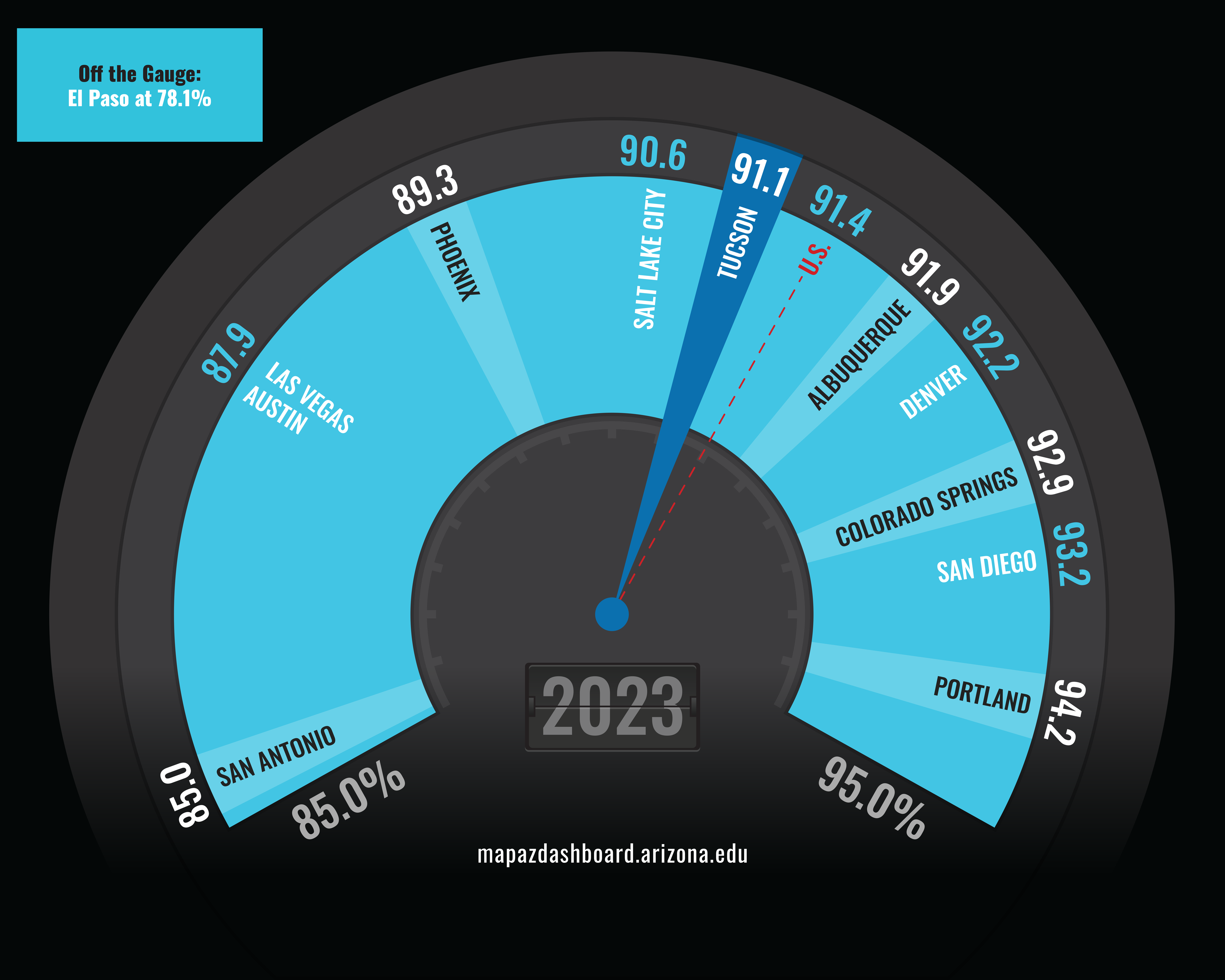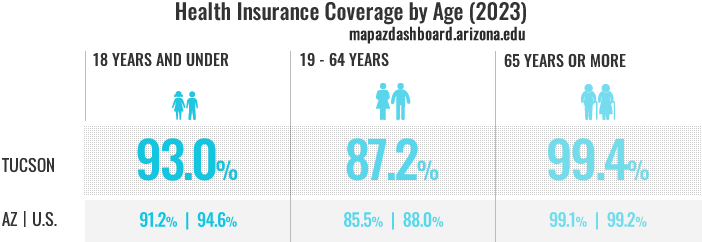 Learn About Health Insurance Coverage Rates in Tucson, Arizona MSA
Learn About Health Insurance Coverage Rates in Tucson, Arizona MSA
How are we doing?
Percent of Residents with Health Insurance Coverage (2023)

In 2023, the Tucson Metropolitan Statistical Area (MSA) ranked sixth compared to 12 western metropolitan areas in health insurance coverage rates. Tucson's rate of 91.1% was just behind the nation. Portland reported the highest health insurance coverage rate at 94.2%, while El Paso was off the gauge at the lower end of the range at 78.1%. Three of the lowest-ranking metropolitan areas were in Texas, which reported the lowest rate among the 10 western states by more than six percentage points. Insurance falls into two categories: public or private. Those in Tucson with insurance are less likely to have private insurance than their national peers.
Why is it important?
Health insurance coverage improves access and quality of medical care to individuals and contributes to the overall health of the community. Those without insurance typically delay treatment and are more likely to seek care through emergency rooms or public hospitals, which increases the financial burden for states. Being uninsured or underinsured can be a financial hardship for individuals who find themselves with a medical emergency or chronic condition that requires extensive medical support.
How do we compare?
In 2023, Tucson and the state of Arizona had fewer insured children than the nation. Tucson also had health insurance rates slightly lower than the U.S. for the working-age population of 18-64. Medicare insures most individuals over the age of 65, resulting in a high rate of coverage.

The white, non-Hispanic population had the highest rate of health insurance coverage in 2023 for Tucson, Arizona, and the nation at 94.8%, 93.8%, and 94.3%, respectively. Those rates were followed closely by the Asian population. The Native Hawaiian and Pacific Islander population ranked lowest among races in Tucson. Those reporting their race as American Indian and Alaska Native, other, or indicating Hispanic ethnicity also reported a low rate of health insurance coverage. One caveat for this was that the Census classified those whose only health coverage was Indian Health Service as “uninsured”.
Tucson had a lower rate of individuals with private health insurance in 2023 than Arizona and the U.S. Those indicating they were insured fell into three categories: public, private, or a mixture of private and public insurance. Those who have health insurance coverage through their employer or union, purchase insurance directly, or have TRICARE plans or other military health plans are considered privately insured. Those insured through Medicare, Medicaid, Veteran’s Administration (VA), or any government assistance plan are considered publicly insured. Just over 21% of the population in Tucson had both private and public insurance. That includes individuals with both Medicare and supplemental private insurance, for example.
How is it measured?
Health insurance coverage estimates cover the civilian noninstitutionalized population, which excludes active-duty military personnel, as well as the population living in correctional facilities and nursing homes. These data are from the Census Bureau’s American Community Survey (ACS), which is a rolling survey that annually produces one-year and five-year estimates on demographic, social, housing, and economic measures.












